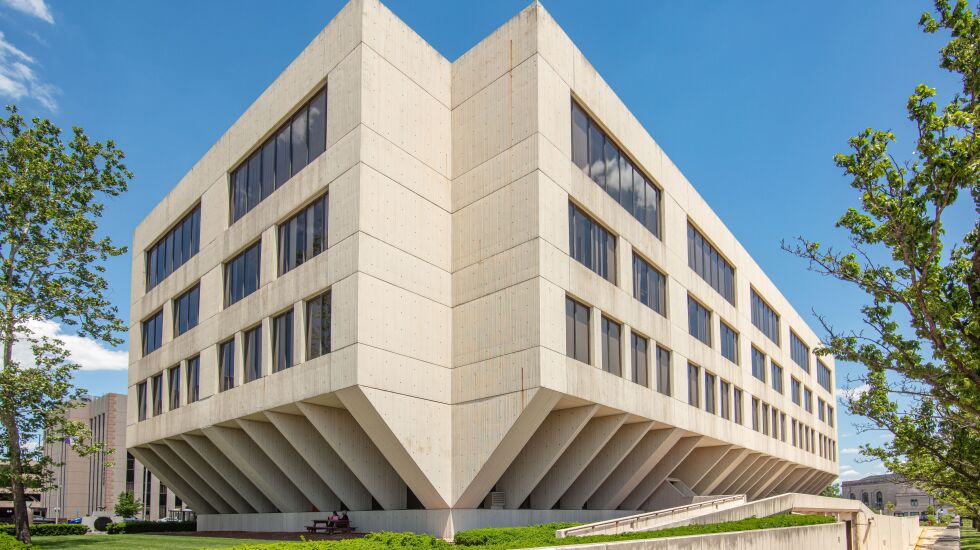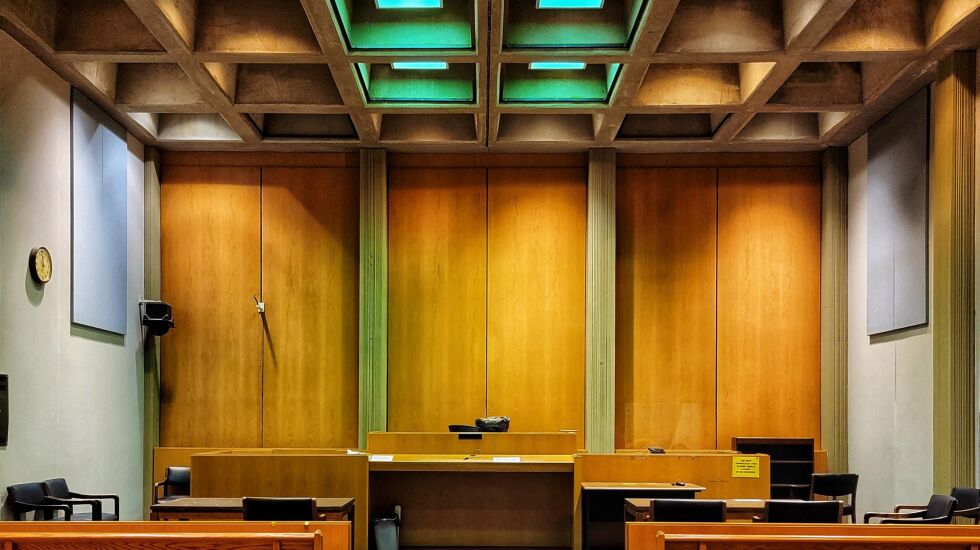
The five-story midcentury modern structure in downtown Joliet is a no-nonsense, squared-off, fist of a building.
It’s the former Will County Courthouse. It often meant trouble if you had to visit the place during the 50 years it was in business.
But now the building itself is in jeopardy.
Located at Jefferson and Chicago streets, the architecturally Brutalist courthouse has been eyeballed for demolition since it closed in November 2020 and was replaced by a new court complex next door.
But Will County officials didn’t immediately send in a wrecking crew. So while the courthouse still stands, a group of Joliet preservationists are now looking for ways to save and reuse the 53-year-old building.
“We imagine that the county could enter into a public/private redevelopment partnership aiming at [making the building home to] community-oriented businesses,” said Hudson Hollister, one of the preservationists rallying around the courthouse.
“Like a food court with local vendors, a conference center for local businesses and government — to a rooftop restaurant and bar with iconic views,” he said. “All aimed at bringing people together in an iconic piece of architecture.”
World’s Ugliest Courthouse?
Built in 1969, the courthouse was designed by Otto Stark of the Chicago architecture firm C.F. Murphy & Associates, which is now Jahn.
Stark could work magic with concrete, as his design for the square-jawed but elegant office high-rise at 55 W. Wacker Dr. — the Blue Cross/Blue Shield building when it opened in 1968 — attests.
But the Will County Courthouse sits low and wide, on the back edge of a fairly nice park-like plaza.
It’s a hard-boiled, Lawrence Tierney of a building. And its stance looks even tougher thanks to a series of ground floor, 45-degree angled buttresses designed to support the reinforced concrete structure’s weight.

Some people find the building — dare I say? — ugly. But rather than argue the point, the preservation group Courthouse Preservation Partners decided to lean into the courthouse’s relative lack of beauty.
“We made T-shirts that are supposed to look like sort of vintage souvenir shirts,” said member Greg Peerbolte, chief executive officer of the Joliet Area Historical Museum. “We say, ‘Visit Will County, home of the world’s ugliest courthouse.’ So we’re kind of having fun with that moniker and, and sort of just owning that part of it.”
I like the building and its absolute visual boldness. Then again, I’m still mad Chicago wrecked old Kennedy-King College, a striking, Brutalist structure from 1972 at 69th Street and Wentworth Avenue.
The mammoth city college prematurely joined the departed architectural ancestors about a decade ago.
But Brutalist architecture can be an acquired taste for many. So making the courthouse’s looks take a back seat to its promising redevelopment potential is not a bad call, particularly in the court of public opinion.
The most compelling reason to save the courthouse isn’t its beauty — although there are surprisingly attractive spaces inside — but what it’s reuse could do to benefit downtown Joliet and its re-emerging downtown, which has far too many surface parking lots and overly wide streets.
It’s especially important as more Brutalist midcentury structures across the region and country are beginning to age out of their original uses.
The architectural style doesn’t have the emotional pull with the public as endangered Victorian or Art Deco buildings did a generation or two ago, but they can be functional, iconic buildings that are worth a second life.
“It’s a striking building — a polarizing building,” Peerbolte said. “We all feel in our group that these are reasons to preserve it, not to send it to a landfill.”
Don’t raze. Redevelop
The Will County Board passed a resolution in 2019 to wreck the courthouse.

But the speaker of the county board, Mimi Cowan of Naperville, and county executive Jennifer Bertino-Tarrant of Shorewood, issued a joint statement in April saying they “welcome engagement on the future of the property” but warned that legal covenants on the site prevent it from being sold to a private developer.
All of this makes the public/private partnership proposed by Courthouse Preservation Partnership, and supported by the statewide group Landmarks Illinois — which named the courthouse to its most endangered list this year — all the more important.
The groups want the county to issue a request for proposals for the property — with the given that the government would be a redevelopment partner — baked into the query.
That’s a fair proposal. Especially if the county, as part of the deal, would throw in the nearly $3 million officials estimate it would cost to demolish the courthouse.
“We’ve actually likened it to the Thompson Center,” Peerbolte said. “When you’re inside, you can really visualize it as a hotel, offices, residences, restaurants — anything.”
Lee Bey is the Chicago Sun-Times architecture critic and a member of the Sun-Times editorial board.
Send letters to letters@suntimes.com.







